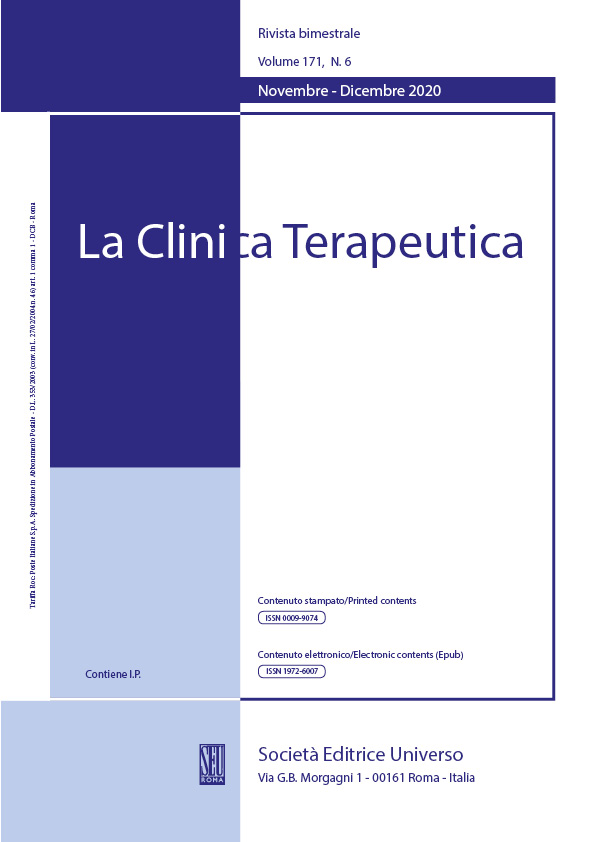Abstract
BACKGROUND:Osteoarthritis (OA) is a common disease in the elderly people, inducing pain and functional limitations. Clodronate (CLO) a first generation non-nitrogen containing bisphosphonate has been purposed as a treatment of OA, being effective on pain, inflammation, bone marrow oedema, osteophytosis and cartilage regeneration. Intramuscular routes of CLO showed efficacy in the treatment of Knee OA (KOA) and erosive OA of the hand. In KOA intraarticular CLO at low doses (0.5-2 mg) showed efficacy as well as hyaluronic acid (HA), being able to improve the effectiveness if associated to HA.
METHODS:Nine consequent patients (4 female, 5 male, mean age 78,22) with KOA at 2nd or 3rd degree following Kellgren-Lawrance scale, non responder to HA and unintended to surgery. They were treated with intraarticular CLO at the weekly dose of 20 mg, plus lidocaine 1% in 5 cc of saline solution for a route of 5 weekly infiltrations, followed by a second route of 5 intraarticular infiltrations 3 months after the first course. Visual analog score (VAS) pain and Tegner-Lysholm Score (TLS) were used to assess changes following CLO treatment
RESULTS: Baseline pain was 6,77/10, reduced to 1,09 at day 150 (after second course) and to 2,3/10 at day 240. TLS at baseline was 56,7/100, improved to 96,7 at day 150 and to 84,1 at day 240. At day 240 only 2 out of 9 patients had a negative judgement of the treatment and decided to stop it, while 7 were satisfied and available to a further course. There was no increase of consumption of anti-inflammatory or analgesic drugs. A short time lasting pain after the injections was registered in all patients.
CONCLUSIONS: a higher dose of intraarticular CLO in KOA showed good compliance, amelioration of pain and functionality also in patients non responders to HA.
